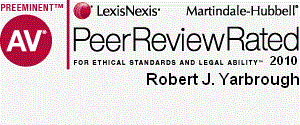Newsletter Issue 42 - August 2012
In this issue:
Google Patent Search
Value of innovative immigrants
Whether Internet linking is copying
Google Patent Search has New Features and New Powers
Do you want to find out whether your better mousetrap is patentable? For inventors and patent attorneys, Google Patent Search is a cheap (as in free) and easy way to perform a light-weight screening search. Since 2006, Google Patent Search has allowed use of familiar word searching skills to search a database of U.S. patents and published applications. Google has announced that the database is expanded to include not only U.S. patent prior art but also patent applications published by the European Patent Office. As of this writing, European patent publications do not yet appear to be showing up on Google Patent Search.
Google also has launched a very interesting new feature call 'Find Prior Art,' which appears as a button on the search results page. The 'find prior art' button allows the searcher to select search terms suggested by the search engine or to select the searcher's own terms. The search engine then looks for both patent and non-patent prior art using those terms and returns the ten best results. The author recently took the 'Find Prior Art' button out for a test drive. The search terms suggested by the search engine were not useful; however, using the author's search terms, the 'Find Prior Art' button found relevant non-patent technical treatises.
Another useful searching resource is 'Google Scholar,' which provides word search access to Google's database of technical treatises and abstracts. Google Scholar also can be used to search patents. You can locate 'Google Patent Search' and 'Google Scholar' by following the links above or entering those terms in any web search engine.
From Brain Drain to Brain Flow
At one time, leaders in developing countries and in international organizations decried the "brain drain" that led the best and brightest in what we used to call the "third world" to emigrate to the West to take advantage of superior educational and employment opportunities. The United States was the destination of choice, both for these reasons and because other societies were seen as less hospitable to immigrants.
As any student of innovation knows, promoting innovative thinking is, at best, an inexact enterprise. One of the few certainties, however, is that innovation happens at edges, where turbulence promotes mixing, more often than at the stable center, where people and ideas have greater homogeneity. In academia and industry, the concept is akin to cross-pollination, as a newly-minted Ph.D. leaves her institution to take up a teaching or research post at another university, government laboratory or company. It may be argued that globalization is not best exemplified by the search for cheap labor, but rather, by the search for great brains.
Beginning in the 1970s, students from rising Asia - India, South Korea, China and Japan - appeared on American campuses in increasing numbers. Many of these students stayed in the United States after graduation, teaching, working in corporate research laboratories, and starting new companies. This educational trend has both continued and quickened...today more than half of all foreign Ph.D. students in American universities come from just three countries: China, India and South Korea. The difference is that after graduation, the United States now largely refuses to allow them to remain. We tell them, "Take your degree and go home!" because immigration, and immigrants, have become a political football.
The conclusion of The Scientist in its recent editorial is
one that those who fashion United States immigration policy
would do well to heed:
Countries that lay out the welcome mat for foreign research
talent and allow their own researchers to go abroad freely
do better than closed research economies in every sense. ...
Only through expanding the shared global knowledge-base will
we be able to ignite the spark of innovation behind new
industries that will create jobs, stimulate economic growth,
and solve the world's most pressing problems, resulting in
more vibrant, prosperous, and peaceful societies.
Internet Trends: Linking is not Copying (In the 7th Circuit,
anyway)
Here's another Internet copyright conundrum. Assume you have a social networking web site where you let users post links or bookmarks to their favorite videos from all over the Internet. To view the videos, a visitor clicks on a link and the video is streamed into a video frame much like you see on YouTube. Many of your users post links to legitimate videos but some also post links to videos that were copied without the permission of their owners. Remember, your web site and your servers contain only links to the videos, not copies of the videos themselves. Are you liable for contributory copyright infringement by permitting users to post links to infringing videos?
The answer to this question is not obvious. Is a streaming video an infringing copy of the work? Is either posting the link or streaming the video a prohibited public performance? In a recent appellate opinion, Judge Posner of the Federal Circuit Court for the Seventh Circuit has offered a solution. In Flava Works, Inc. v. myVidster.com (7th Cir. 2012), the plaintiff sued myVidster for contributory infringement. myVidster operates a website similar to our hypothetical video sharing site. Flava Works contended that myVidster contributed to copyright infringement by permitting users to post links to illegal copies of pornographic movies. Ordinarily, such films are available only in Flava Works' web site and only if the viewer paid to see them. The lower court granted Flava Works a preliminary injunction, concluding that it was likely that it would prevail in proving that myVidster was a contributory copyright infringer. Judge Posner disagreed and vacated the order.
Judge Posner concluded that posting a link was not the same
as posting a "copy" of the infringing work. The video, Judge
Posner reasoned, is being transmitted from a third-party's
server to the viewer's computer. myVidster, according to the
court, was not hosting videos and never touched the video
streams. The court wrote that the infringer is the
individual who uploaded it to the third-party's server, not
myVidster, and not MyVidster's visitor:
As long as the visitor makes no copy of the copyrighted
video that he is watching, he is not violating the copyright
owner's exclusive right, conferred by the Copyright Act ...
Someone who uses one of those [links] to bypass Flava's pay
wall and watch a copyrighted video for free is no more a
copyright infringer than if he had snuck into a movie
theater and watched a copyrighted movie without buying a
ticket. The facilitator of conduct that doesn't infringe
copyright is not a contributory infringer.
The question of whether myVidster is contributorily liable for an infringing "public performance" was not as clear to the judge, particularly as to whether the process of making the videos available to the public by uploading them could be interpreted under the Copyright Act as a public performance. On that score, Judge Posner, concluded that the law was ambiguous. On the other hand, it was clear to the court that myVidster could not be construed as offering a public performance by providing lists of links for viewing videos. Judge Posner wrote that myVidster is no more liable than the New Yorker is for providing theater listings:
By listing plays and giving the name and address of the theaters where they are being performed, the New Yorker is not performing them. It is not "transmitting or communicating" them.
For now myVidster gets off the hook but If you're interested
in this topic, Judge Posner's reasoning is as entertaining
as it is interesting. Learn more about copyright law from
the opinion, which can be downloaded from this link.

